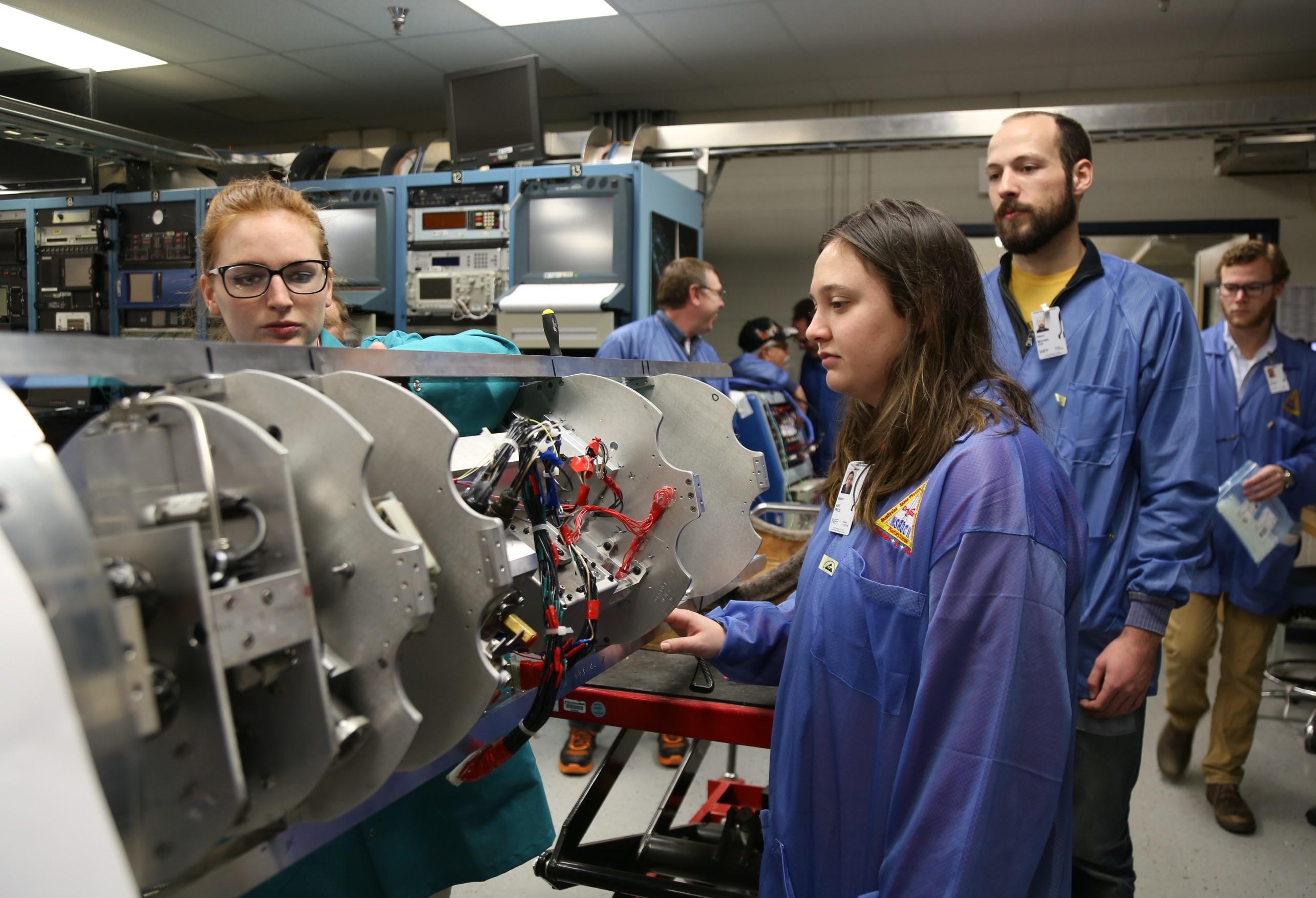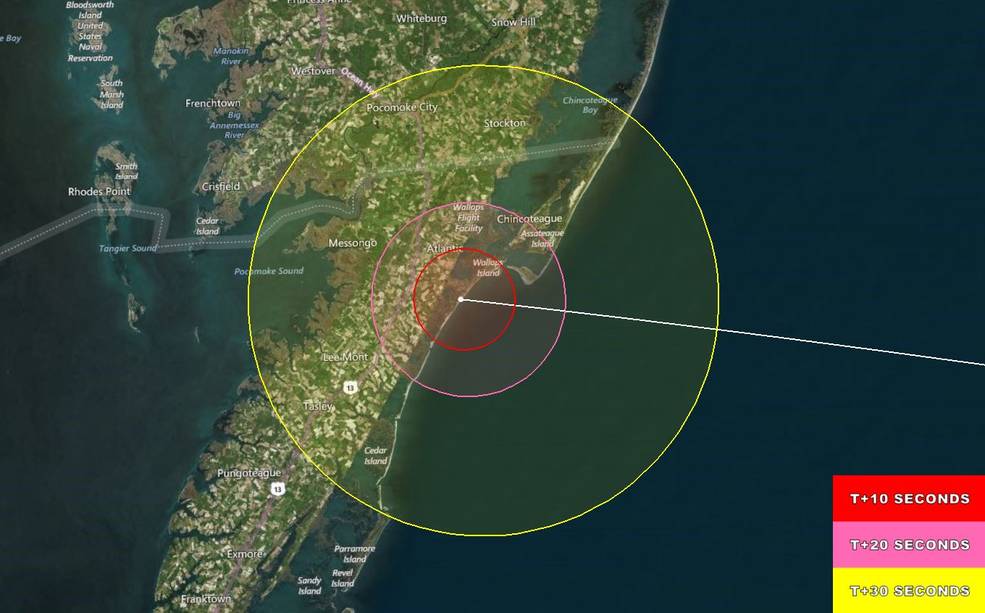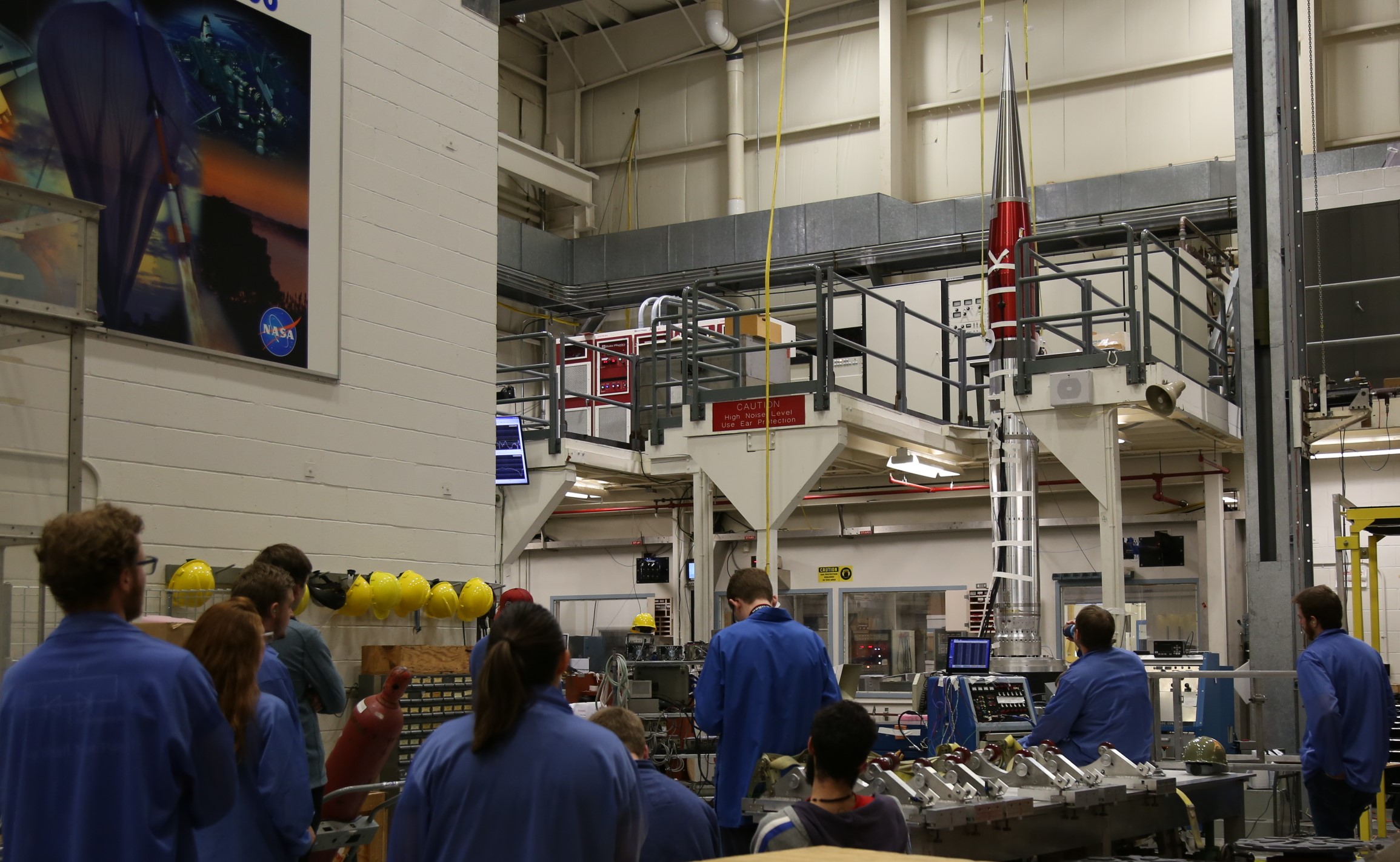Watch University Student Projects Launch on a NASA Rocket Early Sunday

Update for March 24: NASA has delayed the launch of the University Student Instrument Project on a small Terrier Improved Malemute sounding rocket to no earlier than Sunday, March 25, due to rough seas in the payload recovery zone. NASA's live webcast will begin at 6 a.m. EDT on Sunday.
Student spaceflight projects will launch from NASA's Wallops Flight Facility in Virginia on Sunday morning (March 25), and the rocket carrying them might be visible along parts of the U.S. East Coast.
The University Student Instrument Project (USIP) payload is the work of teams at the Florida Institute of Technology, the University of Kentucky, Utah State University and the University of Nebraska-Lincoln. In 2016, these schools were picked to explore projects "that may impact future spaceflight," Joyce Winterton, the senior adviser for education and leadership development at the Wallops Flight Facility on Wallops Island, Virginia, said in a statement about the upcoming launch.
The launch window for the 43-foot-tall (13 meters) Terrier Improved Malemute sounding rocket is set from 6:30 a.m. to 10:30 a.m. EDT (1030 to 1430 GMT). You can watch the launch live on Space.com, courtesy of NASA Wallops, beginning at 6 a.m. EDT (1000 GMT). [NASA Sounding Rocket Lights Up the Sky: Photos]
The NASA Visitor Center at Wallops will open at 5:30 a.m. EDT for public viewing. A sounding rocket is a spacecraft designed to take measurements and conduct experiments, and it spends a relatively short time in space.

Wallops is located in eastern Virginia, and people along the coast of the state and those as far north as Maryland are expected to be able to see the USIP launch.
If you live farther away but want to catch this student project payload flying up into the sky, you can watch it online. In addition to the live webcast from Wallops, a Facebook Live broadcast will show the launch starting at 6:15 a.m. EDT (1015 GMT). Smartphone users can also download the "What's Up at Wallops" app, which features a compass that shows the direction you should face for launch viewing.
Get the Space.com Newsletter
Breaking space news, the latest updates on rocket launches, skywatching events and more!
According to NASA, the rocket will reach an altitude of about 100 miles (160 kilometers). The experiments will later descend by parachute and land in the Atlantic Ocean about 70 miles (110 km) from Wallops Island after the flight. The projects will then be recovered and returned to the students later that day.

The ocean recovery plan caused a series of launch delays. The USIP flight was originally scheduled for Thursday morning (March 22) and was delayed to Friday, but officials postponed it to Saturday because of bad weather, and rough seas were expected to interfere with recovery efforts. Rough seas were also expected on Saturday, forcing a delay to Sunday.
During the flight, students at the Florida Institute of Technology will test an insulation repair material in a near-vacuum environment, while students at the University of Kentucky will deploy a small entry spacecraft during the flight to test a communications-and-thermal-protection system design. Utah State University students will test a thruster system with green propellant while looking for any harmful effects of plume contamination, and students at the University of Nebraska will test a retractable boom and solar blanket for applications on small satellites as well as sounding rockets.
Editor's note: If you capture an amazing image of the sounding rocket launch that you would like to share with Space.com and its news partners for a story or photo gallery, send photos and comments to spacephotos@space.com.
Follow Doris Elin Salazar on Twitter @salazar_elin. Follow us @Spacedotcom, Facebook and Google+. Original article on Space.com.
Join our Space Forums to keep talking space on the latest missions, night sky and more! And if you have a news tip, correction or comment, let us know at: community@space.com.

Doris is a science journalist and Space.com contributor. She received a B.A. in Sociology and Communications at Fordham University in New York City. Her first work was published in collaboration with London Mining Network, where her love of science writing was born. Her passion for astronomy started as a kid when she helped her sister build a model solar system in the Bronx. She got her first shot at astronomy writing as a Space.com editorial intern and continues to write about all things cosmic for the website. Doris has also written about microscopic plant life for Scientific American’s website and about whale calls for their print magazine. She has also written about ancient humans for Inverse, with stories ranging from how to recreate Pompeii’s cuisine to how to map the Polynesian expansion through genomics. She currently shares her home with two rabbits. Follow her on twitter at @salazar_elin.









